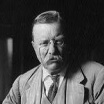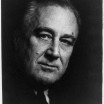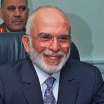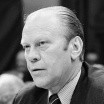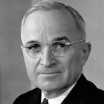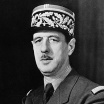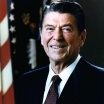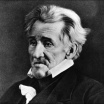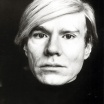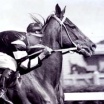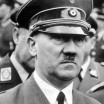They Nearly Bought the Farm
History is full of tragically assassinated leaders, from Julius Caesar to Anwar Sadat. But history is also full of near-misses. Here are a few famous leaders who were almost assassinated.
In October of 1912 THEODORE ROOSEVELT was on his way to address a campaign rally in Milwaukee, Wisconsin when he was shot with a .38 revolver by German immigrant John Schrank. The bullet smashed through Roosevelt’s eyeglasses case and his two-page speech, fractured his fourth rib and lodged in his chest. Roosevelt, famed for his dramatic flair, insisted on delivering his speech as planned — he spoke for 84 minutes — and only then went to a hospital for treatment. He recovered quickly, but lost the election in November. Schrank claimed that William McKinley had appeared to him in a dream and told him to kill Roosevelt. The claim convinced authorities that Schrank was insane, and he spent the rest of his days in a mental institution.
Teddy’s cousin and fellow president FRANKLIN D. ROOSEVELT was almost killed before he could even take office. FDR was merely president-elect when immigrant Giuseppe Zangara fired five shots at him on 13 February 1933, while Roosevelt was making a speech from his open car in Miami, Florida. Zangara reportedly was upset by the Depression and suffered from chronic stomach pains which he somehow thought would be relieved by killing Roosevelt. Zangara was foiled by another spectator, Lillian Cross, and his shots missed the president-elect but hit Chicago mayor Anton Cermak, who later died of his wounds. No one seems to doubt that Zangara pulled the trigger, but his case is sometimes cited as a case of justice rushed: he was electrocuted on 20 March 1933, just five weeks after the shooting and only two weeks after Cermak died of his wounds.
Jordan’s KING HUSSEIN was thrust into power by the same incident which nearly killed him. In July of 1951 Hussein accompanied his grandfather, King Abdullah, to the al-Aqsa mosque in Jerusalem. As they entered the holy site Abdullah was shot and killed by a Palestinian nationalist. The 16-year-old Hussein, only a few feet from his grandfather, was saved from death when a bullet smashed into a medal on his uniform. Hussein’s father, King Talal, abdicated in 1952; Hussein became king in 1953 and ruled until his 1999 death.
GERALD FORD may have begun national “healing” after the Watergate scandal, but that didn’t stop two different women from taking potshots at him. On 5 September 1975, Charles Manson devotee Lynette “Squeaky” Fromme waited for Ford outside a Sacramento, California hotel and pulled out a Colt .45 pistol just as he reached to shake her hand. Fromme pulled the trigger but the loaded gun didn’t fire — she had neglected to put a round in the chamber. Secret Service agents tackled Fromme before she could fire a second time. Fromme was later convicted and sentenced to life in prison. Barely two weeks later, on September 22 in San Francisco, 45-year-old Sara Jane Moore yanked a pistol from her purse and fired on Ford from a distance of about 40 feet. She missed — it’s said because a bystander, Oliver Sipple, jostled her arm. Like Fromme, Moore was sentenced to life in prison, but was released 31 December 2007 after serving more than thirty years.
In 1950 renovations were underway at the White House, so president HARRY TRUMAN was living temporarily at Blair House across the street. On November 1 of that year, while Truman napped inside, Puerto Rican nationalists Griselio Torresola and Oscar Collazo tried to shoot their way into Blair House to assassinate him. The two attacked from opposite sides of the building, killing one guard and wounding two others before being stopped themselves. Torresola was killed in the attack. Collazo was seriously wounded and later sentenced to death, but Truman commuted the sentence to life imprisonment and served the remainder of his term. President Jimmy Carter ordered Collazo released in 1979. (For more details, check this Truman Library account.)
When the 1958 rebellion of French military officers in Algeria threatened France with civil war, World War II hero CHARLES DE GAULLE returned to power as president of France’s Fifth Republic. At first carefully neutral on Algeria, de Gaulle eventually began to favor Algerian independence — leading to more than one attempt on his life by anti-independence factions. A famous attempt occurred on the outskirts of Paris in August 1962, when gunmen attacked a motorcade carrying de Gaulle and his wife. De Gaulle’s car was raked with gunfire; tires were punctured and the rear window shattered, but the de Gaulles were unhurt. After the car had rolled safely to a stop, de Gaulle climbed out and made the famous remark, “They really are bad shots.”
On 15 May 1972 Alabama governor GEORGE WALLACEwas campaigning for president at a shopping center in Laurel, Maryland, when he was attacked by Arthur Bremer, a 21-year-old loner from Wisconsin. Bremer fired five bullets from a snub-nosed revolver, severely wounding Wallace and leaving the governor paralyzed from the waist down. (Bremer’s diary indicated that he hoped to assassinate either Wallace or president Richard Nixon.) Bremer was convicted of attempted murder and given a 53-year sentence, which is due to expire in 2025. Bremer was one inspiration for the 1976 movie Taxi Driver, in which Robert DeNiro plays a loner and would-be assassin who is besotted with a teenager played by Jodie Foster.
History’s most photographed close call may have been the shooting of president RONALD REAGAN. Reagan had been in office only a few months when he gave a speech at the Washington Hilton hotel on 30 March of 1981. As he left the Hilton he was attacked by 26-year-old bystander John Hinckley, Jr. Hinckley emptied his .22 pistol, firing six shots and wounding three other men. As the president was hustled away in his limousine, it became clear one of Hinckley’s shots had hit him in the torso under his left arm. The driver rushed Reagan to the hospital with a tricky chest wound which almost killed him. Hinckley was captured, declared insane, and sent to a high-security mental hospital. Reagan recovered and completed two terms in office, thereby breaking the supposed 140-year curse of presidents elected in years ending in ‘0’.
ANDREW JACKSON was well into his second term when attacked on January 30, 1835. A deranged house painter, Richard Lawrence, approached Jackson outside the U.S. Capitol building with two derringer pistols. He took aim with the first at less than 15 feet, but the pistol misfired. Lawrence drew his second pistol and pulled the trigger — incredibly, it too misfired. President Jackson then beat Lawrence with his cane. According to William DeGregorio in The Complete Book of U.S. Presidents, “Soon after the assault, Lawrence’s derringers were examined and found to be in working order. The odds of two such weapons malfunctioning in succession were put at one to 125,000.”
Pop artist ANDY WARHOL was not so lucky when Valerie Solanas came gunning for him in 1968. Solanas was an acquaintance of Warhol’s, a radical feminist and author of the outlandish S.C.U.M. Manifesto (S.C.U.M. supposedly standing for the “Society for Cutting Up Men”). Mentally unstable, Solanas was apparently angry at Warhol for ignoring a script she had given him the previous year. On June 3 she took the elevator up to The Factory, Warhol’s Manhattan studio, and opened fire with a .38 caliber pistol. Warhol was hit in the abdomen and rushed to the hospital, critically wounded. He recovered, but the incident seemed to mark the end of his greatest creative years. Solanas was put in a psychiatric hospital and later convicted of assault. The incident was recounted in the 1996 film I Shot Andy Warhol.
Australian racing champion PHAR LAP was the near-victim of one of history’s earliest drive-by shootings. On 11 March 1930, stablehand Tommy Woodcock was leading the big chestnut gelding near a Melbourne racetrack when a strange car cruised by and a gun muzzle emerged. Woodcock used his own pony (and himself) to shield Phar Lap; the shot went astray and the car sped off. The attempted assassins were never found, though suspicion fell on bookmakers who had been losing tremendous amounts of money on the horse’s winning streak. Undaunted, Phar Lap promptly won the Melbourne Cup and cemented his place as an Australian sports hero. However, malignant forces may have gotten Phar Lap in the end: two years later he died under suspicious circumstances at a ranch in California.
Taiwan president CHEN SHUI-BIAN was shot in a bizarre assassination attempt on 19 March 2004, one day before national elections. Chen and his vice president, Annette Lu, were grazed by gunfire while driving through Chen’s hometown of Tainan in an open-top red jeep. Firecrackers were exploding among the cheering crowds, and nobody heard the shots being fired; in fact, Chen didn’t seem to realize he was hit until blood began seeping through his shirt. Lu was slightly wounded in the knee. Both were rushed to Chimei Hospital, where doctors needed 11 stitches to close a 4-inch flesh wound across Chen’s abdomen. A spent bullet was found caught in Chen’s jacket pocket.The next day Chen was re-elected by a razor-thin margin over his opponent, Lien Chan, and analysts felt sympathy votes had swung the election. “”The shooting may have cost us a million votes,” opposition leader Huang Chao-shun told the television network TVBS. Supporters of Lien even suggested the shooting could have been staged for political purposes. Others claimed that bookmakers might have been trying to kill Chen to avoid taking heavy losses if he was defeated. (Shades of Phar Lap!) So far, no arrests have been made in the case.
On July 20, 1944, German leader ADOLF HITLER met with staff members in “the Wolf’s Lair,” his headquarters near Rastenburg. Halfway through the meeting an explosion rocked the room; a bomb hidden in a briefcase had been set off. Four men were killed, but by chance the heavy oak conference table shielded the Fuhrer, leaving him with burns and punctured eardrums but otherwise very much alive. The bomb had been planted by Colonel Claus von Stauffenberg, a German officer who had become disillusioned with the Nazi regime. Von Stauffenberg and his co-conspirators were captured and summarily shot. A year later Hitler himself was dead, having committed suicide as his regime fell to pieces around him.

